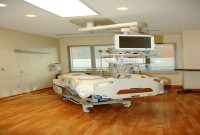- Home
- Business Processes
- Industry Knowledge
- Aerospace Industry
- Automotive Industry
- Banking Domain
- BFSI Industry
- Consumer/ FMCG Industry
- Chemicals Industry
- Engineering & Construction
- Energy Industry
- Education Domain
- Finance Domain
- Hospitality Domain
- Healthcare Industry
- Insurance Domain
- Retail Industry
- Travel and Tourism Domain
- Telecom Industry
- Leadership Skills
- eLearning
- Home
- Domain Knowledge
- Healthcare Industry
- Overview of Healthcare Industry
Overview of Healthcare Industry
The health care industry, or medical industry, is a sector that provides goods and services to treat patients with curative, preventive, rehabilitative, or palliative care. The modern health care sector is divided into many sub-sectors and depends on interdisciplinary teams of trained professionals and paraprofessionals to meet the health needs of individuals and populations. This article provides an overview of the medical industry.
This section is an attempt to understand the definitions, cultural, political, organizational, and disciplinary perspectives of this industry. This section is designed to help learners understand key concepts, terminology, issues, and challenges associated with the health care industry, and strategies employed to meet some of those challenges. It will identify the main sectors of the health care industry and its business drivers, and review the key aspects of the industry business model, its competitive environment, and the current trends in the industry. The target audience for these tutorials is IT professionals working on the healthcare domain, consulting houses, industry investors, and all size companies that sell products or services to healthcare sectors and allied industries. This section will be useful for organizations and professionals looking for knowledge and key business information in the health care industry
What is Health Care?
Health care (or healthcare) is the diagnosis, treatment, and prevention of disease, illness, injury, and other physical and mental impairments in humans. Health care is delivered by practitioners in medicine, chiropractic, dentistry, nursing, pharmacy, allied health, and other care providers. It refers to the work done in providing primary care, secondary care, and tertiary care, as well as in public health.
What is the Healthcare Industry?
The health care industry, or medical industry, is a sector that provides goods and services to treat patients with curative, preventive, rehabilitative, or palliative care. The healthcare industry is composed of establishments devoted to prevention, diagnosis, treatment, and rehabilitation of medical conditions. Such treatment may be through providing products or services and may be provided privately or publicly. The modern health care sector is divided into many sub-sectors and depends on interdisciplinary teams of trained professionals and paraprofessionals to meet the health needs of individuals and populations. The health care industry includes establishments ranging from small-town private practices of physicians who employ only one medical assistant to busy inner-city hospitals that provide thousands of diverse jobs. The Healthcare industry is littered with risks and challenges as it is an industry that requires constant innovation under increased regulations.
The health care industry is one of the largest industries in the world, and it has a direct effect on the quality of life of people in each country. Health care (or healthcare) is the diagnosis, treatment, and prevention of disease, illness, injury, and other physical and mental impairments in humans. Health care is delivered by practitioners in medicine, chiropractic, dentistry, nursing, pharmacy, allied health, and other care providers. The health care industry, or medical industry, is a sector that provides goods and services to treat patients with curative, preventive, rehabilitative, or palliative care.
Importance of Healthcare Industry:
The health care industry is tremendously important to people around the world. This industry comprises of different players including hospitals, doctors, nursing homes, diagnostic laboratories, pharmacies, medical device manufacturers, and other components of the health care system. This article provides an overview of the healthcare industry. Aging populations and increasingly prevalent chronic diseases are the fundamental drivers creating demand for the expansion of lifestyle medical procedures and the healthcare industry. There will be a huge demand for medical technology products for years to come.
Impact of Healthcare Industry on Economy:
The health care industry is tremendously important to people around the world as well as to the national economies. It is one of the fastest-growing industries in the world. Consuming over 10 percent of gross domestic product (GDP) of most developed nations, a correlation exists between income levels and expenditure on health care in various countries. For example, some of the large developing economies, such as Brazil, India, China, and Russia, spend less on health care than more industrialized economies, such as the United States or France.
The health care industry also plays an important role as being the largest employer in the global economy, if we add up the number of people working in each sector across the world. In most countries, the employment growth rate of the health industry is higher than that of other industries. However, the healthcare industry as it exists today is highly fragmented and divided among many different companies and different players. No single firm/corporation has a large enough share/monopoly of the market to be able to influence the industry's direction or price levels.
Classification of Healthcare Industry:
The modern health care sector is divided into many sub-sectors and depends on interdisciplinary teams of trained professionals and paraprofessionals to meet the health needs of individuals and populations. The health care industry is one of the world's largest and fastest-growing industries and forms an enormous part of a country's economy. The delivery of modern health care depends on groups of trained professionals and paraprofessionals coming together as interdisciplinary teams. This includes professionals in medicine, nursing, dentistry, and allied health, plus many others such as public health practitioners, community health workers, and assistive personnel, who systematically provide personal and population-based preventive, curative, and rehabilitative care services. For purposes of finance and management, the health care industry is typically divided into several areas. As a basic framework for defining the sector, the United Nations International Standard Industrial Classification (ISIC) categorizes the health care industry as generally consisting of:
- Hospital Activities
- Medical and Dental Practice Activities
- Other human health activities
This third class involves activities of, or under the supervision of, nurses, midwives, physiotherapists, scientific or diagnostic laboratories, pathology clinics, residential health facilities, or other allied health professions, e.g. in the field of optometry, hydrotherapy, medical massage, yoga therapy, music therapy, occupational therapy, speech therapy, chiropody, homeopathy, chiropractic, acupuncture, etc.
The Global Industry Classification Standard and the Industry Classification Benchmark further distinguish the industry as two main groups:
1. Health care equipment and services
Health care equipment and services comprise companies and entities that provide medical equipment, medical supplies, and health care services, such as hospitals, home health care providers, and nursing homes.
2. Pharmaceuticals, biotechnology, and related life sciences
The second industry group comprises sector companies that produce biotechnology, pharmaceuticals, and miscellaneous scientific services.
3. Healthcare Providers and Professionals:
A health care provider is an institution (such as a hospital or clinic) or person (such as a physician, nurse, allied health professional, or community health worker) that provides preventive, curative, promotional, rehabilitative, or palliative care services in a systematic way to individuals, families or communities.
The medical industry is also supported by many professions that do not directly provide health care itself but are part of the management and support of the health care system. The incomes of managers and administrators, underwriters and medical malpractice attorneys, marketers, investors, and shareholders of for-profit services, all are attributable to health care costs.
Delivery of Healthcare Services:
The delivery of health care services - from primary care to secondary and tertiary levels of care - is the most visible part of any health care system, both to users and the general public. There are many ways of providing health care in the modern world. The place of delivery may be in the home, the community, the workplace, or in health facilities. The most common way is face-to-face delivery, where care providers and patients see each other 'in the flesh'. This is what occurs in general medicine in most countries. However, with modern telecommunications technology, in absentia health care is becoming more common. This could be when practitioners and patients communicate over the phone, video conferencing, the internet, email, text messages, or any other form of non-face-to-face communication.
Medical Tourism:
Medical tourism (also called medical travel, health tourism or global health care) is a term initially coined by travel agencies and the mass media to describe the rapidly-growing practice of traveling across international borders to obtain health care.
Such services typically include elective procedures as well as complex specialized surgeries such as joint replacement (knee/hip), cardiac surgery, dental surgery, and cosmetic surgeries. However, virtually every type of health care, including psychiatry, alternative treatments, convalescent care, and even burial services are available. As a practical matter, providers and customers commonly use informal channels of communication-connection-contract, and in such cases, this tends to mean less regulatory or legal oversight to assure quality and less formal recourse to reimbursement or redress, if needed.
Over 50 countries have identified medical tourism as a national industry. However, accreditation and other measures of quality vary widely across the globe, and there are risks and ethical issues that make this method of accessing medical care controversial. Also, some destinations may become hazardous or even dangerous for medical tourists to contemplate.
Related Links
You May Also Like
-
This article provides insightful industry analysis and research into the Urgent Care Centers industry. This article discusses the definition, key industry products, and activities along with major industry trends. Understand the revenue model, a brief history of trends during the current century, and key challenges currently being faced by the Urgent Care Centers industry.
-
History of Healthcare Industry
This article provides a short history of healthcare industry and discusses major world events that impacted and shaped the healthcare industry as it stands today. This article briefly traces global healthcare history from ancient times to the colonial era to the modern-day. This article also discusses various ideologies that have dictated the path of global health and set the trend towards globalization of the healthcare sector.
-
Sectors of Healthcare Industry
The healthcare industry provides a variety of services to support the healthcare needs of a community or individuals. A universally agreed-upon classification of sectors does not exist, but the key sectors of the healthcare industry can be broadly classified into four sectors called 'Health care services and facilities', 'Medical devices, equipment, and hospital supplies manufacturers', Medical insurance, medical services and managed care' and 'Pharmaceuticals & Related Segments".
-
Overview of Healthcare Industry
The health care industry, or medical industry, is a sector that provides goods and services to treat patients with curative, preventive, rehabilitative, or palliative care. The modern health care sector is divided into many sub-sectors and depends on interdisciplinary teams of trained professionals and paraprofessionals to meet the health needs of individuals and populations. This article provides an overview of the medical industry.
-
This article provides insightful industry analysis and research into the Nursing Care Facilities industry. This article discusses the definition, key industry products, and activities along with major industry trends. Understand the revenue model, a brief history of trends during the current century, and key challenges currently being faced by the Nursing Care Facilities industry.
-
This article provides insightful industry analysis and research into the Dental Laboratories industry. This article discusses the definition, key industry products, and activities along with major industry trends. Understand the revenue model, a brief history of trends during the current century, and key challenges currently being faced by the Dental Laboratories industry.
-
This article provides insightful industry analysis and research into the specialty hospital industry. This article discusses the definition, key industry products, and activities along with major industry trends. Understand the revenue model, a brief history of trends during the current century, and key challenges currently being faced by the specialty hospital industry.
-
This article provides insightful industry analysis and research into the Blood & Organ Banks industry. This article discusses the definition, key industry products, and activities along with major industry trends. Understand the revenue model, a brief history of trends during the current century, and key challenges currently being faced by the Blood & Organ Banks industry.
-
Nursing and Residential Care Facilities
This article provides insightful industry analysis and research into the Nursing and Residential Care Facilities industry. This article discusses the definition, key industry products, and activities along with major industry trends. Understand the revenue model, a brief history of trends during the current century, and key challenges currently being faced by the Nursing and Residential Care Facilities industry.
-
This article provides insightful industry analysis and research into the Sleep Disorder Clinics industry. This article discusses the definition, key industry products, and activities along with major industry trends. Understand the revenue model, a brief history of trends during the current century, and key challenges currently being faced by the Sleep Disorder Clinics industry.
Explore Our Free Training Articles or
Sign Up to Start With Our eLearning Courses

About Us
Learning
© 2023 TechnoFunc, All Rights Reserved










